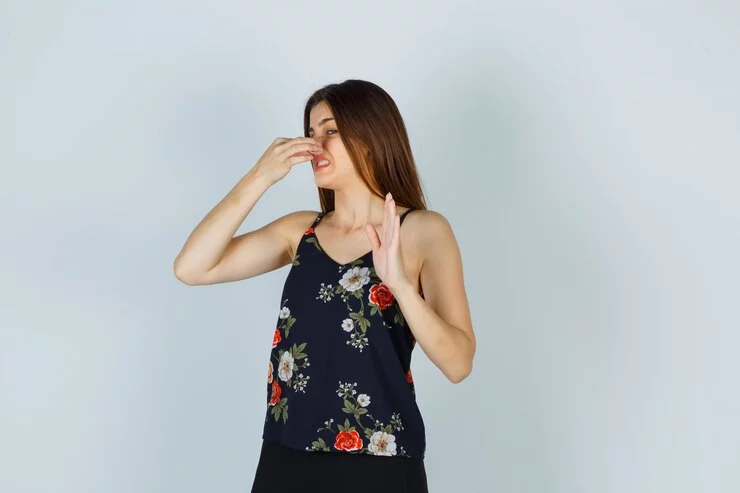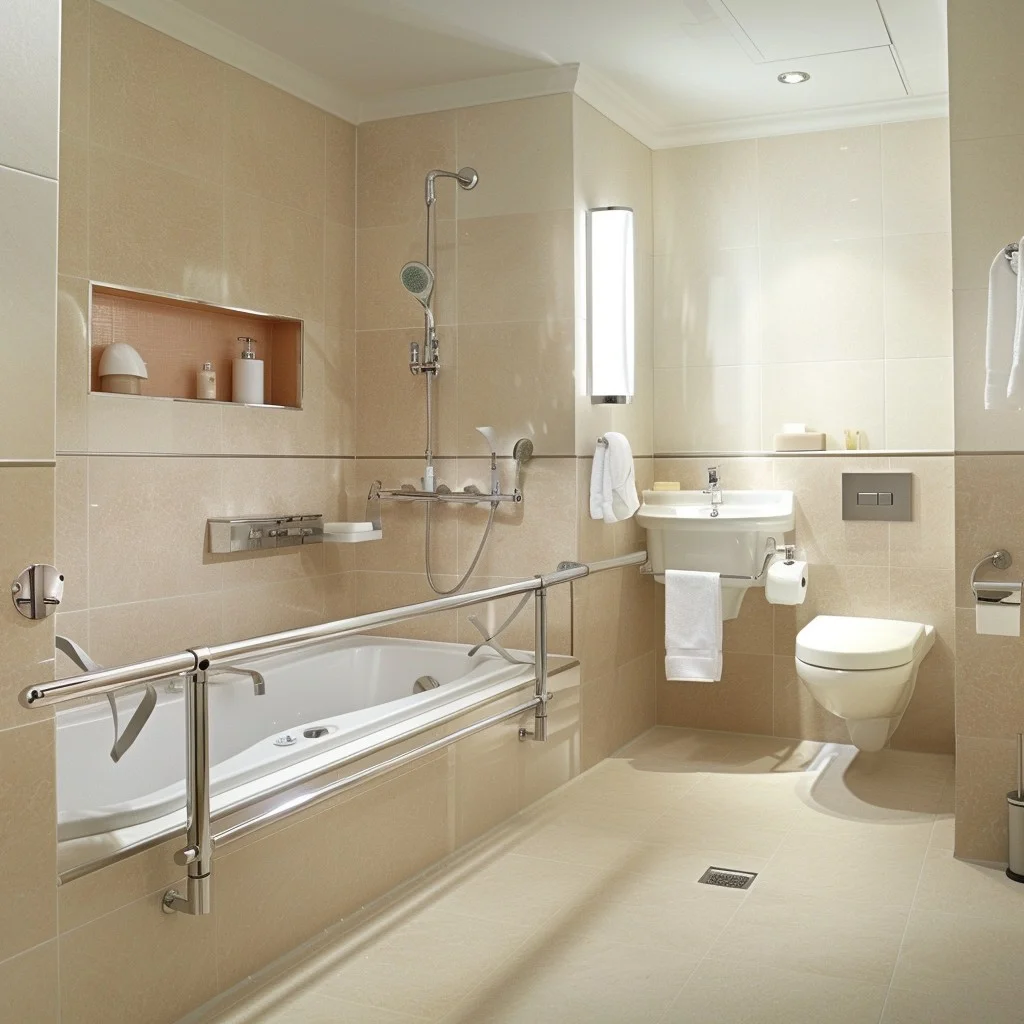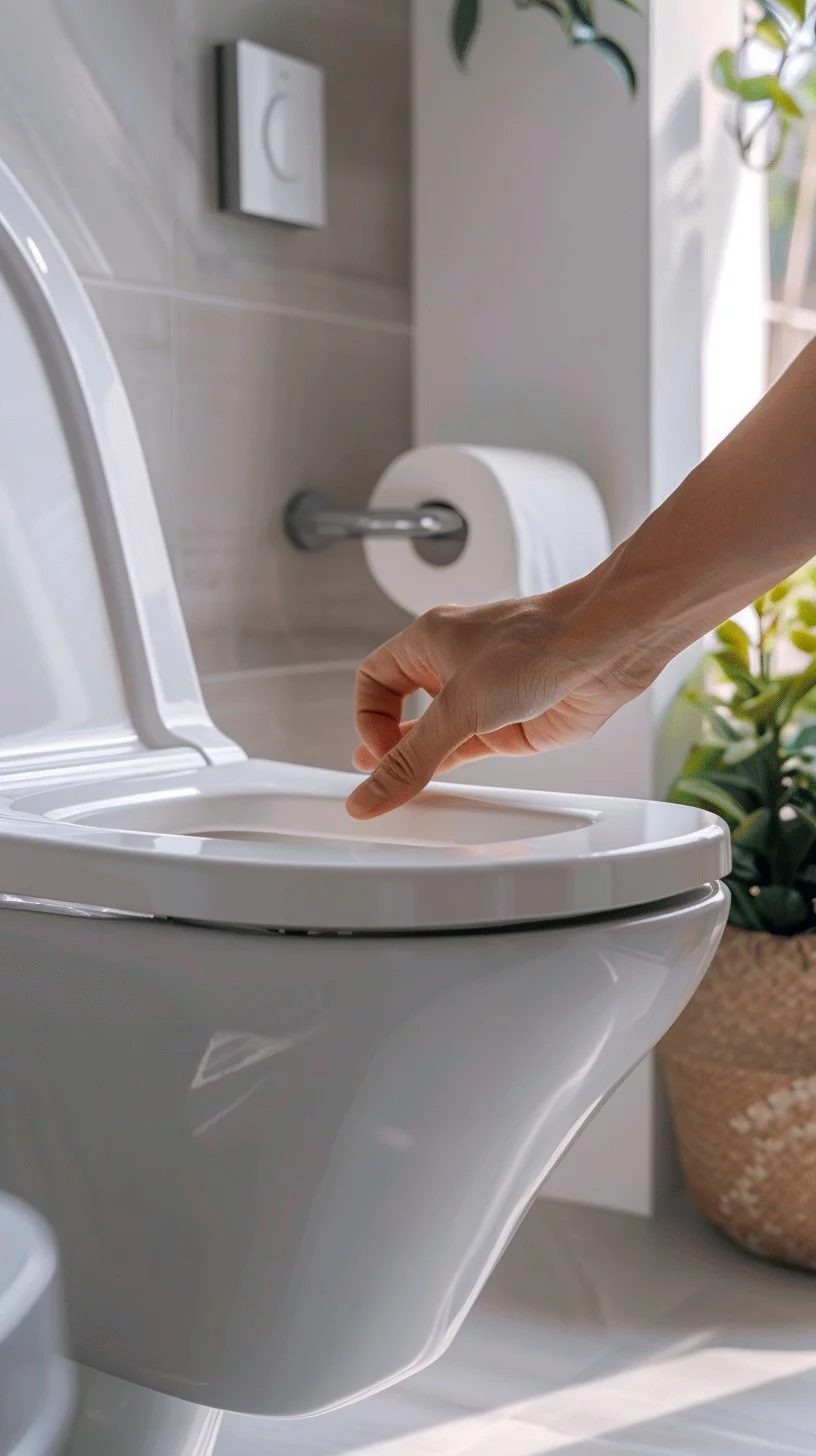Table of Contents
Pee Smell in Bath Room
Eliminating the persistent smell of urine from the bathroom can be a difficult task, yet it is essential to maintain a clean and pleasant environment. Urine odors are often caused by residues that sink into porous surfaces or hidden crevices. To effectively combat this problem, a combination of thorough cleaning, targeted odor neutralization, and regular maintenance is required. This holistic approach ensures that odors are not only masked but completely eliminated, leaving your bathroom fresh and hygienic.
Understanding the Causes of Pee Smell
Before tackling the odor, it’s essential to understand what causes pee smells in the bathroom. Common reasons include:
- Inadequate Cleaning: Regular cleaning is crucial to prevent the buildup of bacteria and odor.
- Residual Urine: Even small amounts of urine can lead to persistent odors, especially in hard-to-reach areas.
- Poor Ventilation: A lack of airflow can trap odors, making them more noticeable.
- Dirty Fixtures: Toilets, urinals, and bathroom floors can harbor bacteria that contribute to unpleasant smells.

How to get rid of pee smell in bathroom
Below is a detailed breakdown of each step to effectively remove urine odor from the bathroom.
1. Clean thoroughly to get rid of pee smell in bathroom
The first and most important step is to ensure that the entire bathroom is thoroughly cleaned. Urine odors are often caused by residues that are not visible but are embedded in surfaces or trapped in crevices. Start by gathering cleaning supplies, including a high-quality bathroom cleaner or a homemade solution of white vinegar and water in a 1:1 ratio.

- Toilet and Surrounding Area: Pay attention to the toilet, especially the base where urine can often collect unnoticed. Clean the inside of the toilet bowl with a toilet brush and cleaner. Don’t forget to clean under the toilet seat and around the hinges where urine splatters can hide.
- Floors and walls: Clean the floor around the toilet, making sure you get to all corners and grout lines where urine can get into. Also, clean the walls, especially those near the toilet, as urine can sometimes splash on them.
- Cracks and hard-to-reach places: Pay close attention to any cracks, seams, or gaps between tiles or around the toilet base. Use a small brush or an old toothbrush to clean these areas. If the odor persists after cleaning, consider using a steam cleaner for a more thorough cleaning.
2. Use Baking soda get rid of pee smell in bathroom.
After cleaning, the next step involves deodorizing the bathroom using baking soda, a natural and effective odor eliminator.
- Usage: Sprinkle a generous amount of baking soda on areas that are prone to odor, such as the floor around the toilet and any other area where urine can be absorbed.
- Allow to sit: Allow the baking soda to sit for at least 15-20 minutes. This duration allows the baking soda to effectively absorb the odor. For a more permanent smell, you can leave the baking soda on overnight.
- Removal: After the baking soda has had time to work, sweep or vacuum it up. If it was applied to vertical surfaces or around fixtures, wipe it off with a damp cloth. Repeat this process as needed until the odor is gone.
3. Disinfect with enzyme cleaners.
Enzyme cleaners are particularly effective at eliminating urine odor because they break down the organic compounds in urine that cause odor.
- Choose the right enzyme cleaner: Look for a product specifically formulated to treat urine odor, which will contain enzymes that digest the proteins and urea found in urine.
- Application: Follow the directions on the product, but in general, you’ll apply the enzyme cleaner directly to the affected areas, making sure it soaks into any porous surfaces like grout, caulking or wood. .
- Allow to sit: Allow the enzyme cleaner to sit on the surface for the time recommended by the manufacturer, often around 10-15 minutes. For particularly stubborn odors, you may need to reapply several times.
- Rinse: After the enzyme cleaner has had time to work, rinse the area with clean water and dry it thoroughly. This step will ensure that no residue is left behind that can attract dirt or contribute to future odors.
4. Ventilate the bathroom to get rid of pee smell in bathroom
Proper ventilation is important not only to remove odors but also to maintain a healthy environment in the bathroom.
- Natural ventilation: If possible, open windows and doors to allow fresh air to circulate throughout the bathroom. This will help disperse any lingering odors and speed up the drying process after cleaning.
- Use an exhaust fan: If your bathroom has an exhaust fan, turn it on during and after cleaning. A fan will help remove moist air, which can trap odors and contribute to mold and mildew growth.
- Portable Fans: In bathrooms without good natural ventilation, consider using a portable fan to improve airflow. Place a fan to blow air out of the room, helping to move stale air and odors outside.
5. Check and clean bathroom fixtures.
Sometimes, bathroom fixtures can have persistent odors, especially if they have not been maintained regularly.
- Toilet Maintenance: Inspect the toilet, especially around the base where urine can seep under the kick or into the floor. If the cocking looks stained or damaged, it may be time to replace it. Carefully remove the old caking, clean the area thoroughly, and apply the new caking.
- Toilet seat: Consider replacing the toilet seat if it is old or if it has absorbed odors. Modern toilet seats are relatively inexpensive and easy to install, and replacing one can make a significant difference in odor reduction.
- Fixtures and accessories: Don’t forget to clean or replace other bathroom fixtures and accessories that may be contributing to the odor. This includes litter boxes, which should be cleaned regularly, and bath mats, which should be washed frequently.
6. Use an air purifier or deodorizer.
To consistently maintain a fresh-smelling bathroom, consider using an air purifier or deodorizer.

- Air Purifier: An air purifier with a HEPA filter and activated carbon can help remove airborne particles and odors. Place the purifier in the bathroom and run it regularly to keep the air clean.
- Natural deodorizers: Use natural deodorizers such as essential oils, which can be placed in a diffuser or added to homemade air fresheners. Scents like lavender, lemon, or eucalyptus are especially effective at neutralizing odors.
- Absorbent materials: Keep an open container of baking soda or activated charcoal in the bathroom. These materials will continuously absorb odors, keeping the air fresher for longer.
7. Regular maintenance to get rid of pee smell in bathroom
Finally, regular maintenance is the key to preventing urine odor from returning to your bathroom.
- Routine cleaning: Incorporate bathroom cleaning into your household routine. This includes wiping surfaces, cleaning toilets, and mopping floors at least once a week.
- Deep Cleaning: Deep clean the bathroom at least once a month. This should include scrubbing grout lines, cleaning behind the toilet, and using an enzyme cleaner to break down any accumulated organic matter.
- Monitor ventilation: Keep an eye on the ventilation in your bathroom, making sure it remains efficient. Clean the exhaust fan regularly and change the filter if necessary.
By following these detailed steps you can not only eliminate existing urine odors in your bathroom, but also prevent them from returning, ensuring a fresh and pleasant environment.
Additional Methods to Get Rid of Pee Smell in Bathroom
When it comes to eliminating pee odors in the bathroom, there are a variety of effective strategies beyond the basic cleaning solutions. Here are several detailed methods you can implement to combat unpleasant smells:
1. Hydrogen Peroxide
Hydrogen peroxide is an excellent disinfectant and deodorizer that can help neutralize urine odors effectively.
- Preparation: Use a 3% hydrogen peroxide solution, which is readily available at most pharmacies. If you have concentrated hydrogen peroxide, dilute it with equal parts water to ensure safety and effectiveness.
- Application:
- Pour the hydrogen peroxide solution into a spray bottle for easy application.
- Spray it generously on the affected areas, such as the toilet, floor, and walls where urine splashes may have occurred.
- Let it Work: Allow the solution to sit for about 30 minutes. This dwell time helps break down any lingering odors and disinfects the surface.
- Cleaning: After the dwell time, wipe the area clean with a damp cloth or sponge. For tougher stains, you may need to scrub lightly.
- Benefits: Hydrogen peroxide not only neutralizes odors but also kills bacteria and viruses, making it a great choice for maintaining hygiene in your bathroom.
2. Cornstarch
Cornstarch acts as an effective absorbent for odors, making it a great natural option.
- Sprinkling: Generously sprinkle cornstarch over the area where the pee smell is strongest. This works well on floors, carpets, or any soft surfaces.
- Absorption Time: Allow the cornstarch to sit for several hours or overnight. This extended time allows it to absorb both moisture and odors.
- Cleaning Up: After letting it sit, vacuum the area thoroughly to remove the cornstarch along with the absorbed odors. You may need to repeat this process if the smell persists.
- Why It Works: Cornstarch’s absorbent properties make it effective at drawing out moisture that can contribute to lingering odor.
3. Coffee Grounds
Used coffee grounds are not only environmentally friendly but also highly effective in absorbing odors.
- Preparation: After brewing your coffee, save the used coffee grounds and allow them to dry completely.
- Placement: Fill a small bowl or dish with the dried coffee grounds and place it in the bathroom.
- Duration: Leave the bowl overnight or for a few days, allowing the coffee grounds to absorb the odors.
- Replacement: Change the coffee grounds every few days to ensure maximum effectiveness. The rich aroma of coffee will help mask any remaining unpleasant smells.
- Why This Works: Coffee grounds contain compounds that absorb and neutralize odors, making them a practical option for odor control.
4. Charcoal Briquettes
Activated charcoal is a powerful odor absorber commonly used in various applications, including air purification.
- Using Charcoal: Place a few activated charcoal briquettes in a mesh bag or bowl and set them in the bathroom.
- Absorption Period: Allow the charcoal to sit in the bathroom for several days. The charcoal will absorb moisture and odors, significantly improving air quality.
- Maintenance: Replace the charcoal every month or when you notice a decrease in its effectiveness.
- Why Charcoal Works: Charcoal has a porous structure that traps and neutralizes odor-causing particles, making it an excellent choice for tackling stubborn smells.
5. Dish Soap and Water
A simple mixture of dish soap and water can be surprisingly effective in tackling pee smells.
- Preparation: In a bowl or bucket, mix a few drops of dish soap with warm water.
- Application: Use a sponge or cloth to apply the soapy solution to the areas affected by urine. Focus on spots around the toilet, floors, and any surfaces where spills may occur.
- Scrubbing: Scrub the area gently to lift any stains and odors. For stubborn spots, let the soapy solution sit for a few minutes before wiping it clean.
- Rinsing: Rinse the area with clean water and dry it with a towel to remove any soap residue, which can also help eliminate lingering smells.
- Benefits: Dish soap effectively breaks down organic matter, making it easier to clean up spills and eliminate odors.
6. Lemon Juice
Lemon juice is not only a natural deodorizer but also has antibacterial properties that can help combat odors.
- Preparation: Mix fresh lemon juice with an equal part of water in a spray bottle.
- Application: Spray the solution onto surfaces that may have absorbed urine smells, such as the toilet, sink, and floors.
- Let it Sit: Allow the lemon juice solution to sit for about 10-15 minutes to penetrate and neutralize odors.
- Wiping: Wipe the surfaces with a clean cloth. The fresh scent of lemon will leave your bathroom smelling great.
- Why It Works: The acidity of lemon juice neutralizes alkaline odors found in urine, while its fresh scent masks any lingering smells.
7. Air Purifiers
Investing in an air purifier can greatly enhance the freshness of your bathroom by continuously filtering the air.
- Choosing an Air Purifier: Look for an air purifier equipped with a HEPA filter and activated carbon to effectively capture odors and allergens.
- Placement: Position the air purifier in a well-ventilated area of the bathroom, ideally where the smell is strongest.
- Continuous Use: Run the air purifier continuously to keep the air fresh. Many models have a low noise level, making them suitable for use in bathrooms.
- Benefits: Regular use of an air purifier can reduce the accumulation of odors and allergens, creating a healthier bathroom environment.
8. Essential Oil Diffusers
Essential oils can create a pleasant atmosphere in your bathroom while neutralizing odors.
- Selecting Oils: Choose essential oils known for their deodorizing and antibacterial properties, such as eucalyptus, lavender, tea tree, or lemon.
- Using a Diffuser: Fill your essential oil diffuser with water and add a few drops of your selected oil.
- Diffusion: Turn on the diffuser to disperse the fragrance throughout the bathroom. The pleasant scent will help mask any lingering odors.
- Routine Maintenance: Refresh the water and oils regularly to keep the scent strong and effective.
9. Professional Cleaning Services
If all else fails, or if the odors persist despite your best efforts, consider hiring a professional cleaning service.
- Deep Cleaning: Professionals have access to industrial-strength cleaning products and equipment that can provide a deep clean, effectively removing stubborn odors.
- Identifying Underlying Issues: A professional cleaning team can identify any hidden issues, such as leaks or mold, which could contribute to persistent odors and recommend solutions.
- Regular Maintenance: Schedule periodic professional cleanings to maintain a fresh bathroom environment.
By incorporating these detailed methods into your cleaning routine, you can effectively eliminate urine odors and keep your bathroom smelling fresh and inviting. Combining multiple approaches will yield the best results, ensuring that your bathroom remains a pleasant space for everyone. Regular maintenance and preventive measures will further help in keeping those unpleasant smells at bay.
Conclusion
Finally, effectively eliminating urine odor from the bathroom requires a comprehensive approach that includes thorough cleaning, targeted odor neutralization, and ongoing maintenance. From toilets and surrounding areas to hidden crevices and fixtures, it’s possible to address all possible sources of odors and use natural deodorizers and enzyme-based cleaners to eliminate odors at their source rather than simply masking them. is Proper ventilation and regular maintenance are also essential to maintain a fresh and healthy bathroom environment. By implementing these strategies, you can ensure that your bathroom remains a clean, odor-free space that contributes positively to the overall atmosphere of your home. Read More
Here’s a comprehensive FAQ section to accompany the article on how to get rid of pee smells in the bathroom:
FAQs
1. What causes pee smell in bathroom?
Pee smells can be caused by various factors, including inadequate cleaning, residual urine in hard-to-reach areas, poor ventilation, and dirty fixtures. Accumulation of bacteria from urine can lead to persistent odors if not addressed regularly.
2. How can I eliminate urine odors using household items?
You can effectively eliminate urine odors using common household items such as baking soda, vinegar, lemon juice, and hydrogen peroxide. These items help neutralize odors and disinfect surfaces.
3. Are there any natural remedies to remove pee smells?
Yes! Natural remedies like baking soda, vinegar, coffee grounds, and essential oils can help absorb or neutralize odors without harsh chemicals. For instance, baking soda acts as an absorbent, while vinegar has antibacterial properties.
4. How often should I clean my bathroom to prevent odors?
It’s recommended to clean your bathroom at least once a week. However, if there are frequent accidents or heavy usage, you may need to clean it more often to prevent the buildup of odors.
5. Can air fresheners mask pee smells?
While air fresheners can temporarily mask odors, they do not eliminate the source of the smell. It’s essential to clean the area thoroughly to remove the underlying odor and then use air fresheners for a pleasant scent.
6. Do enzyme cleaners really work for urine odors?
Yes, enzyme cleaners are highly effective at breaking down organic matter, including urine. They work by using natural enzymes to digest the bacteria that cause odors, making them a great option for eliminating persistent pee smells.
7. What should I do if the smell persists after cleaning?
If the smell persists after cleaning, check for any hidden areas where urine may have accumulated, such as under the toilet or in grout lines. You may also want to consider professional cleaning services for a deep clean.
8. Can I use bleach to eliminate pee odors?
While bleach can disinfect surfaces, it is not the best option for neutralizing pee odors. Bleach can react with ammonia in urine, creating toxic fumes. It’s safer to use hydrogen peroxide or other natural alternatives.
9. Is it safe to use essential oils in the bathroom?
Yes, essential oils are generally safe to use in the bathroom. However, ensure that any oils used are diluted properly and that you are not allergic to them. Always follow the manufacturer’s instructions for diffusers.
10. What are the benefits of using an air purifier in the bathroom?
An air purifier helps improve air quality by removing odors, allergens, and bacteria from the air. It can provide continuous freshness and reduce the chances of odors returning.
This FAQ section addresses common concerns and questions about eliminating pee smells in the bathroom, providing readers with valuable information and further enhancing the article’s usefulness.


Can you be more specific about the content of your article? After reading it, I still have some doubts. Hope you can help me.